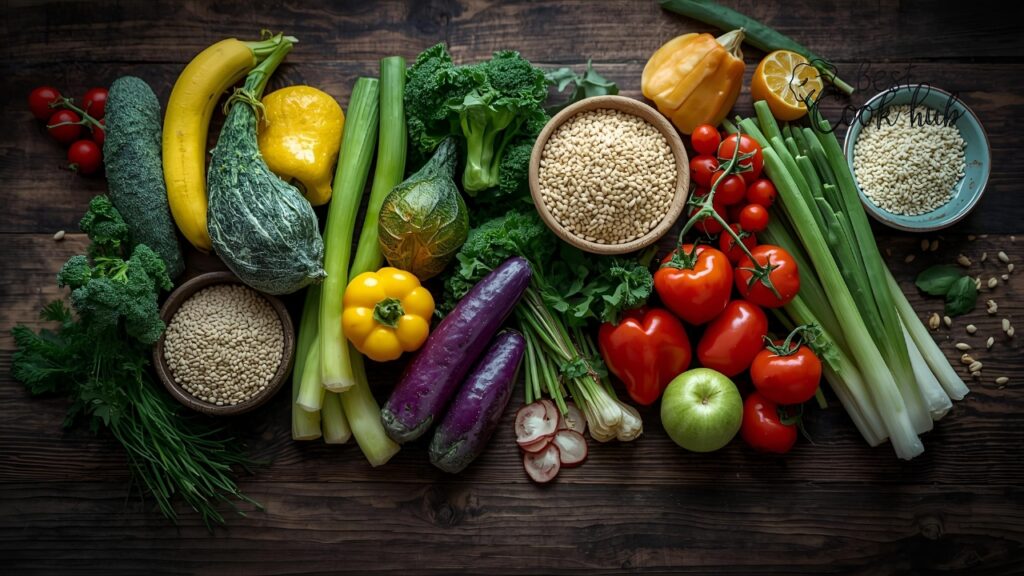
Introduction
Losing weight can be tough. There’s no shortage of diets promising quick results. But most of these plans are too restrictive, expensive, or unrealistic to follow for long.
Here’s some good news: a high fiber diet is a simple, proven, and sustainable way to support weight loss — without starving or depriving yourself.
Unlike many trendy weight loss methods, fiber works with your body’s natural process. It helps you feel fuller longer, supports digestion, and can reduce overall calorie intake without strict calorie counting.
In this blog, we’ll dive deep into:
- How fiber really supports weight loss,
- What science and case studies say,
- How to include it in your daily routine,
- Common mistakes to avoid, and
- Practical tips that actually work.
Problem — Why Weight Loss Is So Hard
Let’s face it: most people struggle with weight loss not because they lack motivation, but because the process itself can feel exhausting.
Here are some common challenges:
- Constant hunger and cravings.
- Low energy during workouts or daily tasks.
- Feeling deprived due to restrictive diets.
- Confusing nutrition advice that changes every month.
- Struggle to maintain results after losing some weight.
According to the World Health Organization, over 1.9 billion adults worldwide are overweight, and about 650 million are classified as obese.
This is not just a number. It reflects how modern eating habits — full of ultra-processed, low-fiber foods — make it easy to gain weight and hard to lose it.
Agitation — Why Most Weight Loss Diets Fail
When people start a weight loss journey, they often follow low-carb, low-calorie, or liquid diets. These methods can produce quick results at first, but:
- Hunger increases because low-fiber foods don’t keep you full.
- Cravings rise because your body wants energy.
- Energy dips, making it hard to exercise or focus.
- Rebound weight gain happens when old eating habits return.
A study published in the American Journal of Clinical Nutrition (2018) showed that people who follow diets low in dietary fiber often consume more calories later in the day. Their bodies crave more food because fiber plays a key role in satiety (the feeling of fullness).
Solution — High Fiber Diet for Weight Loss
A high fiber diet can address many of these weight loss challenges naturally.
What is fiber?
Fiber is a type of carbohydrate your body cannot digest. Instead of being broken down into sugar, it passes through your digestive system and helps keep things moving.
There are two main types:
- Soluble fiber: dissolves in water, forms a gel-like substance, and slows digestion.
- Insoluble fiber: adds bulk to your stool and helps food move through your gut efficiently.
How fiber supports weight loss:
- Increases fullness: Fiber slows digestion, helping you feel full longer.
- Reduces calorie intake: You naturally eat less when you feel satisfied.
- Stabilizes blood sugar: Prevents sudden hunger spikes.
- Improves gut health: A healthy gut supports weight regulation.
According to a study in Annals of Internal Medicine (2015), increasing daily fiber intake to just 30 grams a day helped participants lose weight and lower blood pressure — without following any other specific diet.
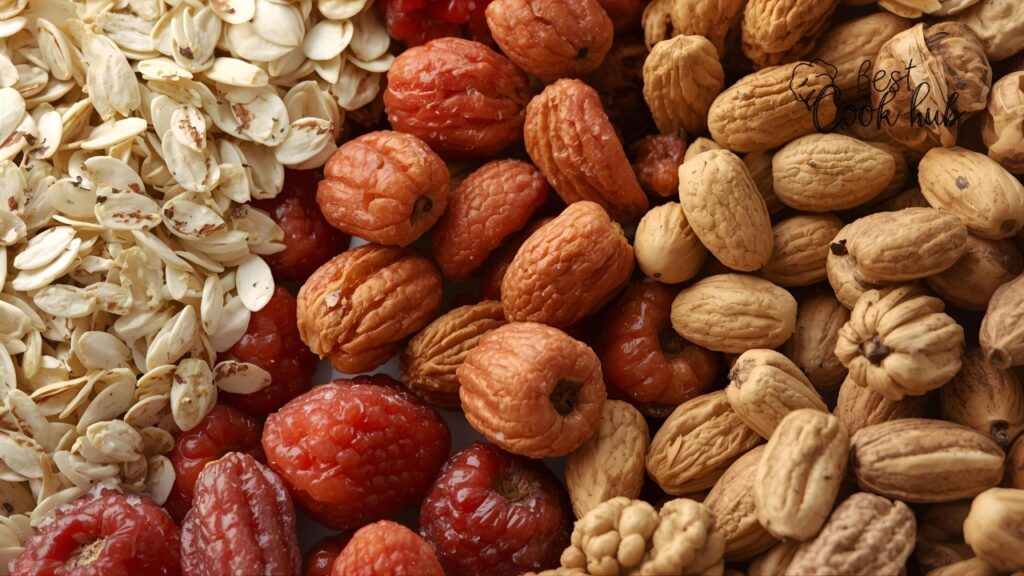
Nutritional Data — Why Fiber Works
Fiber is low in calories but high in volume. This means you can eat more food without consuming too many calories.
Example:
- 1 cup of cooked broccoli has 5 grams of fiber and only 55 calories.
- 1 cup of lentils has 15 grams of fiber and around 230 calories.
- An average apple has 4 grams of fiber and about 95 calories.
Compare this to a bag of chips or a soda, which gives a quick energy spike and then hunger returns.
Case Study Insight: In a Harvard University study with 89,000 women, those who ate more fiber-rich foods had significantly lower body weights over a 12-year period compared to those who ate low-fiber diets.
Fiber-rich diets are not about restriction. They’re about smart fullness.
Best High Fiber Foods for Weight Loss
Adding fiber to your daily meals doesn’t have to be complicated. Here are some top sources:
1. Vegetables (4–8g fiber per cup)
- Broccoli
- Cauliflower
- Brussels sprouts
- Carrots
- Kale and spinach
2. Fruits (3–6g fiber per serving)
- Apples (with skin)
- Berries (raspberries, blackberries)
- Pears
- Oranges
- Bananas
3. Legumes and Beans (7–15g fiber per cup)
- Lentils
- Chickpeas
- Black beans
- Kidney beans
4. Whole Grains (3–7g fiber per serving)
- Oats
- Quinoa
- Brown rice
- Barley
- Whole wheat bread
5. Seeds and Nuts
- Chia seeds
- Flaxseeds
- Almonds
- Sunflower seeds
Pro Tip: Include at least 25–35 grams of fiber daily for best weight loss and health results.
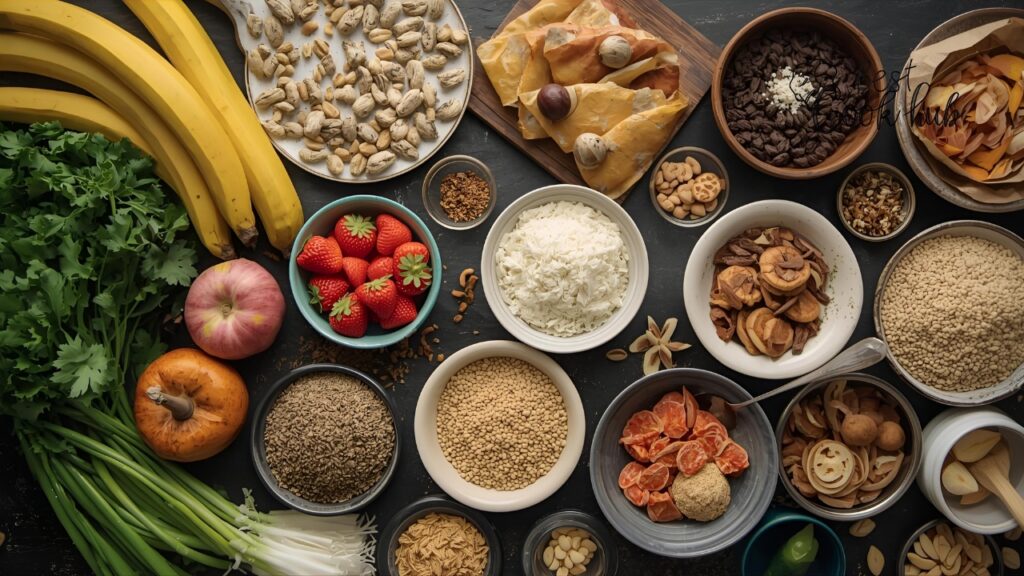
tep-by-Step Plan to Add Fiber for Weight Loss
- Start slowly. Sudden high fiber intake can cause bloating.
- Add fiber to every meal. Think veggies, fruits, legumes, or whole grains.
- Drink plenty of water. Fiber works best when hydrated.
- Swap processed snacks for fruits, nuts, or veggies.
- Make breakfast fiber-rich. Example: oats with berries and chia seeds.
- Aim for consistency, not perfection.
Sample Day Plan:
- Breakfast: Oatmeal with chia seeds, berries, and a boiled egg.
- Snack: Apple with peanut butter.
- Lunch: Lentil soup with a side of salad.
- Snack: Carrot sticks with hummus.
- Dinner: Grilled chicken with brown rice and steamed broccoli.
This simple structure can easily reach 30+ grams of fiber per day without feeling deprived.
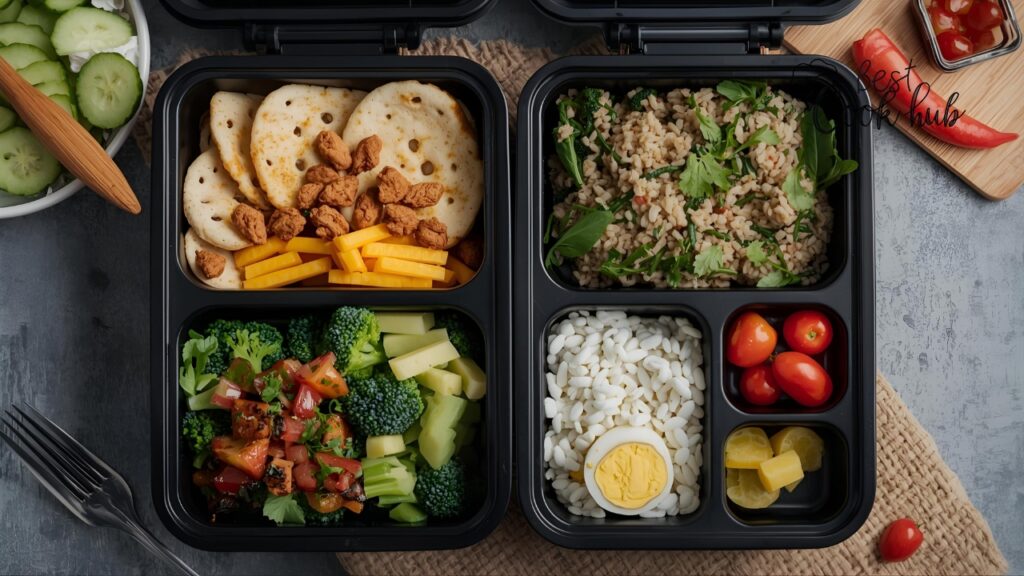
Scientific Evidence & Case Studies
Case Study 1: Annals of Internal Medicine (2015)
240 adults with overweight were asked to follow either a strict diet or simply increase their fiber intake.
- The high fiber group lost about 4.6 pounds in 12 months.
- The strict diet group lost about 5.9 pounds.
- The difference was small, showing fiber alone can produce significant weight loss.
Case Study 2: Harvard School of Public Health
- Participants who increased their fiber intake by 10 grams daily gained less weight over time than those who didn’t.
- They also had lower risk of obesity and diabetes.
Case Study 3: University of Massachusetts Medical School
- People who consumed 35 grams of fiber daily reported reduced hunger, improved digestion, and more stable energy.
These findings prove that a high fiber diet supports long-term, sustainable weight loss.
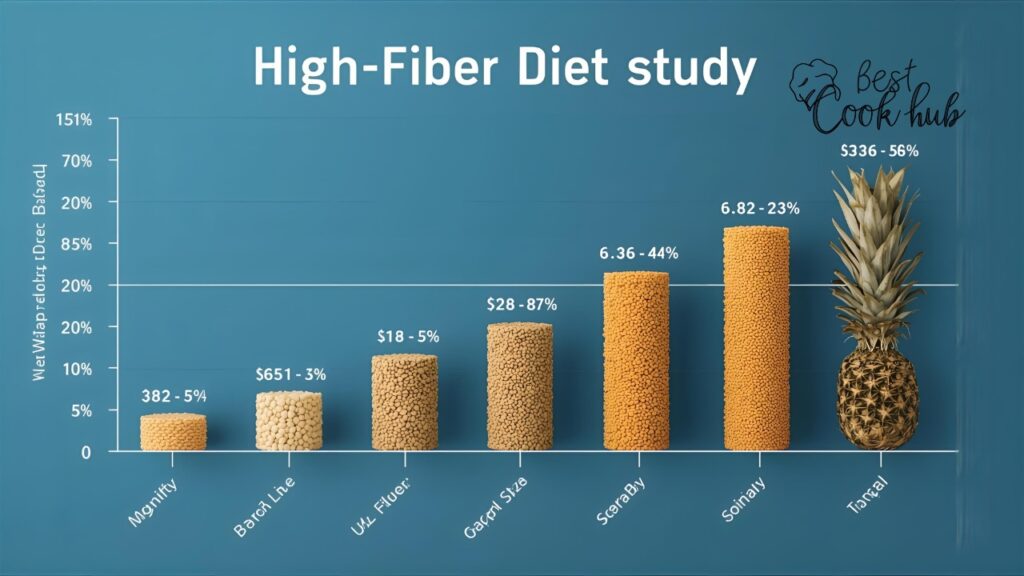
How Fiber Helps You Lose Weight — The Science
Let’s break it down into practical terms:
- Fiber slows digestion. This means your stomach empties slower, and you stay full longer.
- Fiber reduces cravings. Stable blood sugar levels reduce sudden hunger spikes.
- Fiber lowers calorie absorption. Some types of fiber bind to fat and sugar, preventing full absorption.
- Fiber feeds good gut bacteria. Healthy gut flora are linked to better weight regulation.
Scientific Insight: A meta-analysis in The Journal of Nutrition (2017) showed that every 10 grams of fiber added per day was linked to a 1.8 kg weight loss over 12 months, without other major dietary changes.
Best Times to Eat Fiber for Weight Loss
1. Morning:
Starting your day with fiber-rich foods can help control appetite all day.
2. Pre-Meal:
Eating fiber before a main meal can reduce how much you eat.
3. Evening:
Including fiber in dinner supports stable energy and digestion overnight.
Pro Tip: A balanced distribution of fiber throughout the day works better than eating it all at once.
Common Mistakes to Avoid
Even with a good high fiber diet plan, many people make small errors that slow progress:
- Increasing fiber too fast. This can cause gas and bloating.
- Not drinking enough water. Fiber needs hydration to work properly.
- Relying on supplements only. Whole foods provide more nutrients.
- Ignoring overall diet quality. Fiber is a tool, not a magic fix.
- Skipping meals. This disrupts the natural hunger and fullness cycle.
Slow, consistent changes work better than overnight overhauls.
High Fiber Diet vs. Low Fiber Diet — A Real Difference
| Aspect | High Fiber Diet | Low Fiber Diet |
|---|---|---|
| Satiety | High – keeps you full longer | Low – frequent hunger |
| Blood sugar | More stable | More spikes and crashes |
| Calorie intake | Lower naturally | Higher due to cravings |
| Gut health | Supports healthy bacteria | May lead to poor digestion |
| Long-term weight management | Sustainable | Hard to maintain |
Beyond Weight Loss — Other Benefits of High Fiber Diet
High fiber diets don’t just help with weight management. They also support overall health:
- Improves digestion and prevents constipation.
- Lowers cholesterol levels.
- Supports heart health.
- Stabilizes blood sugar.
- Supports a healthy gut microbiome.
According to the CDC, fiber intake is linked to a lower risk of heart disease, type 2 diabetes, and certain cancers.
This is why fiber-rich diets are recommended not just for weight loss but for overall well-being.
Expert Opinions
Dr. Michael Levine, Nutrition Researcher:
“Fiber is one of the simplest and most effective tools for sustainable weight loss. It helps people eat less without feeling deprived.”
Dr. Sarah Kim, Registered Dietitian:
“Most people don’t need a complicated diet plan. Increasing fiber from real foods can lead to steady, lasting results.”
Sample 7-Day High Fiber Meal Plan (Summary)
| Day | Breakfast | Lunch | Dinner | Snacks |
|---|---|---|---|---|
| 1 | Oatmeal + berries | Lentil soup + salad | Grilled fish + quinoa | Apple + nuts |
| 2 | Chia pudding | Chickpea salad | Brown rice + beans | Banana |
| 3 | Whole wheat toast + avocado | Tofu bowl + veggies | Chicken + broccoli | Carrots + hummus |
| 4 | Smoothie with spinach | Black bean tacos | Veggie stir fry | Orange |
| 5 | Overnight oats | Lentil curry | Salmon + brown rice | Pear |
| 6 | High fiber cereal | Quinoa salad | Chickpea stew | Almonds |
| 7 | Green smoothie | Veggie wrap | Grilled chicken + barley | Apple |
This is a simple, flexible plan that helps most people hit 30–35 grams of fiber daily.
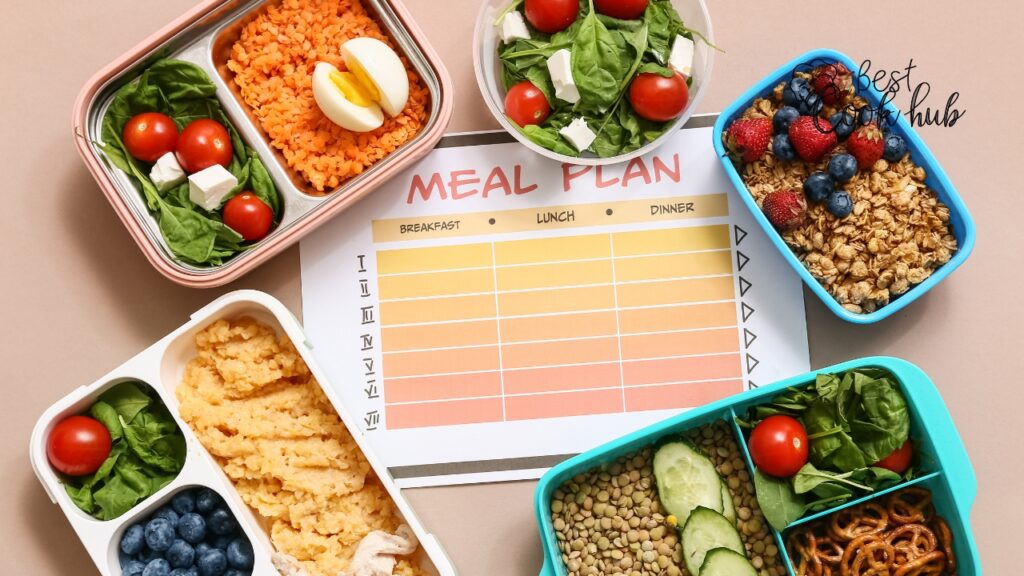
Final Thoughts
A high fiber diet is one of the simplest and most effective strategies for sustainable weight loss. Unlike fad diets, it doesn’t require giving up your favorite foods or following strict rules.
When you eat more fiber:
- You feel full longer,
- Eat fewer calories naturally,
- Support your gut health,
- And improve overall well-being.
Real people and real studies back this up. Fiber is not a trend — it’s a fundamental building block of healthy eating.
Start small. Add more vegetables, fruits, legumes, and whole grains to your meals. In a few weeks, you’ll likely notice better digestion, fewer cravings, and gradual, lasting weight loss.

✅ Pro Tip: Track your daily fiber intake for the first week to learn your habits. A small increase daily is more sustainable than a big jump at once.
FAQ
Most adults should aim for 25–35 grams of fiber daily.
Yes. Rapid increases can cause bloating. Increase intake slowly and drink plenty of water.
Whole foods are best, but supplements can help if your diet is lacking.
Most people notice better appetite control in 2–4 weeks with consistent fiber intake.
No, fiber doesn’t burn fat. It helps you eat less, stay full longer, and manage calories effectively.